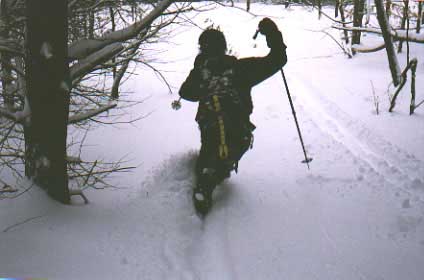Nsherman2006
New Member
Hi all,
I've been searching for answers, and have found lots of great info on this site, but I'm still scratching my head about this one. I don't think there's an "answer" I'm looking for so much as advice. I bought a 1960s single-story ranch with an oil-fired boiler for both baseboard heating and DHW. Boiler appears to operate fine.
I'm in the process of installing solar panels that will likely outproduce my energy usage, so I'm trying to transfer as much of the heating load to electric as possible.
My current plan is to install 2 mini-split units (1 on the main floor and 1 in the basement) to provide both heating and air conditioning, as well as help manage moisture in the basement. I'm also planning a hybrid heat pump water heater (again for both heating and moisture management).
If this was new construction, I wouldn't bother with a boiler at all. However, since I already have the boiler here and working, I'm planning on leaving it installed. This will be particularly useful in the case of a power outage as I can run the furnace off a generator. (I'm in northeast CT so extended winter outages are not unheard of)
So, my options:
1) Leave the boiler in place, but decomission the tankless coil. I'm assuming this would require a modification to the aquastat so that it doesn't call for heat for DHW anymore. This would also leave me with no hot water during a power outage, but that's not a huge deal
2) Remove the boiler entirely. This would be pretty simple, but I don't see any reason to go through the work to tear out a functional system
3) Somehow plumb the HPWH to be the primary source of hot water, but leave the tankless coil operational for supplemental heating or to provide DHW in the case of an outage.
I'm leaning toward option #3. Is it possible to just connect the outlet of the HPWH to the inlet of the tankless coil, so that the HPWH is the primary water heater and the tankless coil supplements it in the case of water temperature dropping? Are there any reasons this is a bad idea?
The thread that seemed the most relevant to this one is:
https://terrylove.com/forums/index....r-heater-alongside-ancient-boiler-coil.69098/
But I think my situation is slightly different with the solar installation making electricity nearly free.
Thanks!
-Neal
I've been searching for answers, and have found lots of great info on this site, but I'm still scratching my head about this one. I don't think there's an "answer" I'm looking for so much as advice. I bought a 1960s single-story ranch with an oil-fired boiler for both baseboard heating and DHW. Boiler appears to operate fine.
I'm in the process of installing solar panels that will likely outproduce my energy usage, so I'm trying to transfer as much of the heating load to electric as possible.
My current plan is to install 2 mini-split units (1 on the main floor and 1 in the basement) to provide both heating and air conditioning, as well as help manage moisture in the basement. I'm also planning a hybrid heat pump water heater (again for both heating and moisture management).
If this was new construction, I wouldn't bother with a boiler at all. However, since I already have the boiler here and working, I'm planning on leaving it installed. This will be particularly useful in the case of a power outage as I can run the furnace off a generator. (I'm in northeast CT so extended winter outages are not unheard of)
So, my options:
1) Leave the boiler in place, but decomission the tankless coil. I'm assuming this would require a modification to the aquastat so that it doesn't call for heat for DHW anymore. This would also leave me with no hot water during a power outage, but that's not a huge deal
2) Remove the boiler entirely. This would be pretty simple, but I don't see any reason to go through the work to tear out a functional system
3) Somehow plumb the HPWH to be the primary source of hot water, but leave the tankless coil operational for supplemental heating or to provide DHW in the case of an outage.
I'm leaning toward option #3. Is it possible to just connect the outlet of the HPWH to the inlet of the tankless coil, so that the HPWH is the primary water heater and the tankless coil supplements it in the case of water temperature dropping? Are there any reasons this is a bad idea?
The thread that seemed the most relevant to this one is:
https://terrylove.com/forums/index....r-heater-alongside-ancient-boiler-coil.69098/
But I think my situation is slightly different with the solar installation making electricity nearly free.
Thanks!
-Neal


